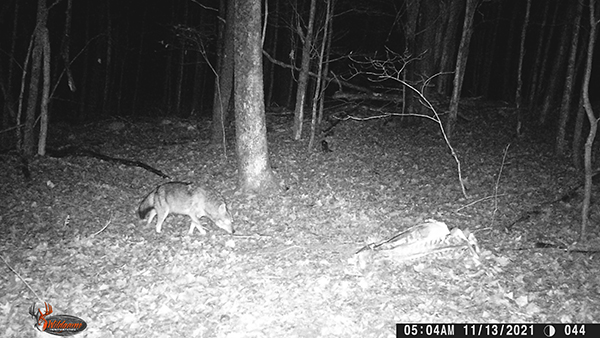When you look at your woods, you might think they’re a wild place, but there are marks of people’s influence all over them. Some are obvious, like cabins and trails. But others are so subtle, you might not even realize that they have a human history.
When you look at your woods, you might think they’re a wild place, but there are marks of people’s influence all over them. Some are obvious, like cabins and trails. But others are so subtle, you might not even realize that they have a human history.
Take the humble wild apple tree. It’s not uncommon to come across one or more of these short trees along old field edges. They make fantastic wildlife food, especially this time of year when the branches are laden with apples. The fruits may be smaller and less tasty than cultivated apples, but deer, bear, and turkeys don’t care. Worms? No problem. Scabs and discoloration? Won’t stop a hungry animal that needs to beef up before winter.

It’s not just the fruits that animals like either. Douglas Tallamy, author of the excellent book Bringing Nature Home, points out that more than 300 species of caterpillars from the northeastern US alone will feed on the leaves of wild apple trees. Those caterpillars in turn attract animals like songbirds that will eat them and feed them to their babies.
But even though these apple trees aren’t cultivated in an orchard, it’s a stretch to call them “wild.” There are a few native apple species in the US, but the vast majority of apple trees—even those growing in the woods—were introduced by people. The ones you see lining old fields are usually planted legacies (or their descendants) from farmers who used to own the land. Without those people, the apple trees wouldn’t be there.

Now in most cases, human introductions of plants tend to be a problem for the woods and the wildlife in them (check out our new section on invasive plants to get a sense of the damage they can cause). Wildlife often can’t eat nonnative plants, and those plants replace other native plants that animals could chow down on.
Wild apples and crabapples, though, are a rare case where the “natives are good, nonnatives are bad” mantra doesn’t apply. Nonnative wild apples are closely enough related to the few native apples that wildlife can and do eat them. They’re also not invasive, so you don’t have to worry about them taking over and preventing native plants from surviving.

If you want to make these human introductions even better for wildlife, apply a little more human effort and give your apple trees a good pruning. Done properly, pruning a wild apple tree will help these wildlife powerhouses grow even more fruit for woodland critters.





